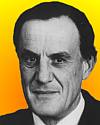
Born 31 Aug 1916; died 16 Jan 2002 at age 85. quotes
English astronomer who was a pioneer in radar and observational astronomy. During and after WW II he worked with R.A. Watson-Watt and then E.G. Bowen to develop radar for uses in aerial combat. In the 1950s he applied this experience to radio astronomy, developing radio-telescope technology at Jodrell Bank Observatory and mapping stellar radio sources. He designed a radio interferometer capable of resolving radio stars while eliminating atmospheric distortion from the image (1952). With R.Q. Twiss, Brown applied this method to measuring the angular size of bright visible stars, thus developing the technique of intensity interferometry. They set up an intensity interferometer at Narrabri in New South Wales, Australia, for measurements of hot stars.«
English astronomer who was a pioneer in radar and observational astronomy. During and after WW II he worked with R.A. Watson-Watt and then E.G. Bowen to develop radar for uses in aerial combat. In the 1950s he applied this experience to radio astronomy, developing radio-telescope technology at Jodrell Bank Observatory and mapping stellar radio sources. He designed a radio interferometer capable of resolving radio stars while eliminating atmospheric distortion from the image (1952). With R.Q. Twiss, Brown applied this method to measuring the angular size of bright visible stars, thus developing the technique of intensity interferometry. They set up an intensity interferometer at Narrabri in New South Wales, Australia, for measurements of hot stars.«
Boffin: A Personal Story of the Early Days of Radar, Radio Astronomy... , by R. Hanbury Brown. - book suggestion.
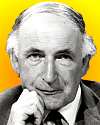
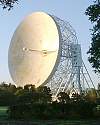
Sir Alfred Charles Bernard Lovell was an English radio astronomer and physicist who established and directed (1951-81) Jodrell Bank Experimental Station, Cheshire, England, with (then) the world's largest steerable radiotelescope, now named after him Prior to WW II, he worked at Manchester University on cosmic ray research. During the war, he helped develop aircraft onboard radar systems. After the war, to escape interference to radar equipment from city trams, he moved his research to the University's more remote Jodrell Bank property. In 1946, he showed that radar echoes could detect optically invisible daytime meteor showers. He gained funding to build the 250-ft-diam. telescope. When completed in 1957, it was able to track the first artificial satellite, Sputnik I.«[Image right: Jodrell Bank radiotelescope.]
The Story of Jodrell Bank, by Bernard Lovell. - book suggestion.
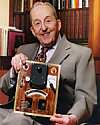
Born 31 Aug 1912; died 10 Aug 2002 at age 89.
American forensic scientist who was most recognized for his contributions to the understanding and control of alcohol impairment in traffic accidents, and who invented the Breathalyser. He collaborated with Professor R.N. Harger of the Indiana University School of Medicine in the introduction of the Drunkometer, the first instrument for accurate measurement of quantities of alcohol in the blood by breath analysis. Subsequently, he invented the Breathalyzer, an instrument that changed the approach of forensic science and police enforcement in response to drinking-and-driving problems. This innovation enabled traffic enforcement authorities to determine and quantify blood alcohol concentrations with sufficient accuracy to meet the demands of legal evidence.
American forensic scientist who was most recognized for his contributions to the understanding and control of alcohol impairment in traffic accidents, and who invented the Breathalyser. He collaborated with Professor R.N. Harger of the Indiana University School of Medicine in the introduction of the Drunkometer, the first instrument for accurate measurement of quantities of alcohol in the blood by breath analysis. Subsequently, he invented the Breathalyzer, an instrument that changed the approach of forensic science and police enforcement in response to drinking-and-driving problems. This innovation enabled traffic enforcement authorities to determine and quantify blood alcohol concentrations with sufficient accuracy to meet the demands of legal evidence.
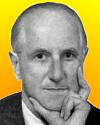
Born 31 Aug 1887; died 17 Sep 1958 at age 71. quotes
Austrian chemist who improved methods in the 1920's to isolate and measure the minute amounts of helium (as little as 10-10 cm3) slowly released by traces of radioactive elements in rocks. This enabled determination of both the age of rocks on earth, and also the age of meteorites which implies the age of the solar system, (presently accepted as 4,600 million years). Earlier, he and his friend Georg Charles de Hevesy introduced radioactive tracer techniques (1912-13). Paneth used radium D as a tracer to measure the solubility of lead salts, then extended the technique to the study of the unstable hydrides of lead and bismuth. He contributed to the study of the stratosphere by determining its composition as a function of altitude up to 45 miles.«
Austrian chemist who improved methods in the 1920's to isolate and measure the minute amounts of helium (as little as 10-10 cm3) slowly released by traces of radioactive elements in rocks. This enabled determination of both the age of rocks on earth, and also the age of meteorites which implies the age of the solar system, (presently accepted as 4,600 million years). Earlier, he and his friend Georg Charles de Hevesy introduced radioactive tracer techniques (1912-13). Paneth used radium D as a tracer to measure the solubility of lead salts, then extended the technique to the study of the unstable hydrides of lead and bismuth. He contributed to the study of the stratosphere by determining its composition as a function of altitude up to 45 miles.«
Chemistry and Beyond: A Selection From the Writings of the Late F.A. Paneth, by Fritz Paneth. - book suggestion.
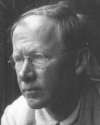
Born 31 Aug 1885; died 4 May 1961 at age 75. quotes
English mathematician who made extensive and notable contributions to the study of algebraic invariants and concomitants of quadratics. Turnbull was also interested in the history of mathematics, writing The Mathematical Discoveries of Newton (1945), and began work on the Correspondence of Isaac Newton.
English mathematician who made extensive and notable contributions to the study of algebraic invariants and concomitants of quadratics. Turnbull was also interested in the history of mathematics, writing The Mathematical Discoveries of Newton (1945), and began work on the Correspondence of Isaac Newton.
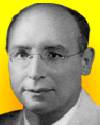
Born 31 Aug 1884; died 22 Mar 1956 at age 71. quotes
George Alfred Léon Sarton was a Belgian-American science historian who established the discipline of the History of Science in the U.S. Studying at Ghent University in Belgium, he first received a degree in Chemistry, followed in 1911 by a Ph.D. in Mathematics. In 1912, he founded Isis as a quarterly journal to publish articles on the history of science. To escape from WW I, he emigrated first to England, and then to the U.S., where he remained. He gave lectures at Harvard University from 1916, and eventually became a professor there, for the history of science (1940-51). His major work was the several volumes of his encyclopedic Introduction to the History of Science (1927-47). His name is honored with the prestigious George Sarton Medal, awarded by the History of Science Society.«
George Alfred Léon Sarton was a Belgian-American science historian who established the discipline of the History of Science in the U.S. Studying at Ghent University in Belgium, he first received a degree in Chemistry, followed in 1911 by a Ph.D. in Mathematics. In 1912, he founded Isis as a quarterly journal to publish articles on the history of science. To escape from WW I, he emigrated first to England, and then to the U.S., where he remained. He gave lectures at Harvard University from 1916, and eventually became a professor there, for the history of science (1940-51). His major work was the several volumes of his encyclopedic Introduction to the History of Science (1927-47). His name is honored with the prestigious George Sarton Medal, awarded by the History of Science Society.«
The Study of the History of Mathematics & the Study of the History of Science, by George Sarton. - book suggestion.
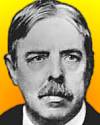
Born 31 Aug 1874; died 9 Aug 1949 at age 74. quotes
Edward L(ee) Thorndike was a U.S. psychologist considered to be the father of Educational Psychology who studied the process of learning in animals, children and adults. His theory of connectionism proposed that mental or behavioral responses to specific stimuli are the result of a process of trial and error that produces neural connections linking the stimuli with the most satisfactory response. Thorndike studied how animals learn through trial and error in his "puzzlebox" experiments, such as observing a hungry cat in a box which received food when it escaped. Gradually, the animal learned what it had to do to escape, and the escape time became shorter. He applied such associative learning to humans and to the practice of education.«
Edward L(ee) Thorndike was a U.S. psychologist considered to be the father of Educational Psychology who studied the process of learning in animals, children and adults. His theory of connectionism proposed that mental or behavioral responses to specific stimuli are the result of a process of trial and error that produces neural connections linking the stimuli with the most satisfactory response. Thorndike studied how animals learn through trial and error in his "puzzlebox" experiments, such as observing a hungry cat in a box which received food when it escaped. Gradually, the animal learned what it had to do to escape, and the escape time became shorter. He applied such associative learning to humans and to the practice of education.«
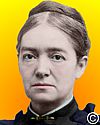
Born 31 Aug 1842; died 10 Jun 1906 at age 63. quotes
(née Mary Corinna Putnam) American physician, well-respected for her medical abilities, who advocated social reform to expand educational opportunities for women by providing the same training and clinical practice as men. She was awarded Harvard University's Boylston Prize for her 1876 essay, The Question of Rest for Women during Menstruation. In this work, she refuted allegations of the physical limitations of women, such as published by Dr. Edward H. Clarke's in Sex in Education (1873). She supported her position with scientific data including sphygmographic tracings of pulse rate, force, and variations to confirm that a woman maintained vigorous health throughout her monthly cycle. Jacobi became the first female member of the Academy of Medicine.« more
(née Mary Corinna Putnam) American physician, well-respected for her medical abilities, who advocated social reform to expand educational opportunities for women by providing the same training and clinical practice as men. She was awarded Harvard University's Boylston Prize for her 1876 essay, The Question of Rest for Women during Menstruation. In this work, she refuted allegations of the physical limitations of women, such as published by Dr. Edward H. Clarke's in Sex in Education (1873). She supported her position with scientific data including sphygmographic tracings of pulse rate, force, and variations to confirm that a woman maintained vigorous health throughout her monthly cycle. Jacobi became the first female member of the Academy of Medicine.« more
Sympathy and Science: Women Physicians in American Medicine, by Regina Morantz-Sanchez. - book suggestion.
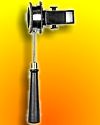
Ophthalmoscope
Hermann Ludwig Ferdinand von Helmholtz was a German physiologist and physicist who contribed much to physiology, optics, electrodynamics, mathematics, and meteorology, including the law of the conservation of energy (1847). He also developed thermodynamics, in particular introducing concept of free energy. In 1850, he measured the speed of a nerve impulse and, in 1851, invented the ophthalmoscope. He discovered the function of the cochlea in the inner ear and developed Thomas Young's theory of colour vision (published 1856). His study of muscle action led him to formulate a much more accurate theory concerning the conservation of energy than earlier proposed by Robert Mayer and James Joule.
Hermann von Helmholtz and the Foundations of Nineteenth-Century Science, by David Cahan. - book suggestion.
/FergusonJames(1797-1867)Thm.jpg)
Born 31 Aug 1797; died 26 Sep 1867 at age 70.
Scottish-American astronomer who discovered the first previously unknown asteroid to be detected from North America. He recorded it on 1 Sep 1854 at the U.S. Naval Observatory, where he worked 1848-67. This was the thirty-first of the series and is now known as 31 Euphrosyne, named after one of the Charites in Greek mythology. It is one of the largest of the main belt asteroids, between Mars and Jupiter. He was involved in some of the earliest work in micrometry was done at the old U.S. Naval Observatory at Foggy Bottom in the midst of the Civil War using a 9.6 inch refractor. He also contributed to double star astronomy. Earlier in his life he was a civil engineer, member of the Northwest Boundary Survey, and an assistant in the U.S. Coast Survey.«(Note: Another astronomer and instrument maker by the same name of James Ferguson lived in Scotland 1710-1776.)
Scottish-American astronomer who discovered the first previously unknown asteroid to be detected from North America. He recorded it on 1 Sep 1854 at the U.S. Naval Observatory, where he worked 1848-67. This was the thirty-first of the series and is now known as 31 Euphrosyne, named after one of the Charites in Greek mythology. It is one of the largest of the main belt asteroids, between Mars and Jupiter. He was involved in some of the earliest work in micrometry was done at the old U.S. Naval Observatory at Foggy Bottom in the midst of the Civil War using a 9.6 inch refractor. He also contributed to double star astronomy. Earlier in his life he was a civil engineer, member of the Northwest Boundary Survey, and an assistant in the U.S. Coast Survey.«(Note: Another astronomer and instrument maker by the same name of James Ferguson lived in Scotland 1710-1776.)
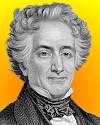
Born 31 Aug 1786; died 9 Apr 1889 at age 102.
French chemist who began the study of the chemistry of fats. He discovered fatty acids, which led to a great improvement in the quality of stearine candles and in the fats used to make soaps. Stearine was first described by Chevreul in 1814 and was produced by heating glycerine with stearic acid. When used in candles it gave a steadier, brighter, odourless light. He was the first to find sugar in urine. He investigated and named margarine. In physics, he introduced (1839) his attempt at producing a systematic approach to seeing colours. In his 90s he turned to the study of the psychology of the elderly. When he died at 102, in his lifespan he had experienced both the French Revolution and the building of the Eiffel Tower.
French chemist who began the study of the chemistry of fats. He discovered fatty acids, which led to a great improvement in the quality of stearine candles and in the fats used to make soaps. Stearine was first described by Chevreul in 1814 and was produced by heating glycerine with stearic acid. When used in candles it gave a steadier, brighter, odourless light. He was the first to find sugar in urine. He investigated and named margarine. In physics, he introduced (1839) his attempt at producing a systematic approach to seeing colours. In his 90s he turned to the study of the psychology of the elderly. When he died at 102, in his lifespan he had experienced both the French Revolution and the building of the Eiffel Tower.
The Principles of Harmony and Contrast of Colors and Their Applications to the Arts, by Faber Birren (Ed.)and Michel Eugene Chevreul. - book suggestion.
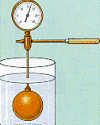
Born 31 Aug 1663; died 11 Oct 1705 at age 42. quotes
French physicist who developed the air thermometer - which relies on increase in volume of a gas (rather than a liquid) with temperature - and used it (1702) to measure change in temperature in terms of a proportional change in pressure. This observation led to the concept of absolute zero in the19th century. Deaf since childhood, Amontons worked on inventions for the deaf, such as the first telegraph, which relied on a telescope, light, and several stations to transmit information over large distances. Amontons' laws of friction, relied upon by engineers for 300 years, state that the frictional force on a body sliding over a surface is proportional to the load that presses them together and is also independent of the areas of the surfaces.
French physicist who developed the air thermometer - which relies on increase in volume of a gas (rather than a liquid) with temperature - and used it (1702) to measure change in temperature in terms of a proportional change in pressure. This observation led to the concept of absolute zero in the19th century. Deaf since childhood, Amontons worked on inventions for the deaf, such as the first telegraph, which relied on a telescope, light, and several stations to transmit information over large distances. Amontons' laws of friction, relied upon by engineers for 300 years, state that the frictional force on a body sliding over a surface is proportional to the load that presses them together and is also independent of the areas of the surfaces.

Died 31 Aug 2005 at age 96 (born 4 Nov 1908). quotes
Polish-British physicist who is a leading critic of nuclear weaponry. Rotblat and the Pugwash Conferences, "for their efforts to diminish the part played by nuclear arms in international politics and in the longer run to eliminate such arms," received the Nobel Peace Prize in 1995. Forty years earlier, he and other scientists, with philosopher Bertrand Russelland Albert Einstein, published a manifesto calling on researchers to take responsibility for their work, particularly those working on the atomic bomb. This led to the Pugwash Conferences on Science and World Affairs, first convened in 1957 in Pugwash, Nova Scotia, Canada. He was secretary-general (1957-73), and president (from 1988) of this London-based worldwide organization.
Polish-British physicist who is a leading critic of nuclear weaponry. Rotblat and the Pugwash Conferences, "for their efforts to diminish the part played by nuclear arms in international politics and in the longer run to eliminate such arms," received the Nobel Peace Prize in 1995. Forty years earlier, he and other scientists, with philosopher Bertrand Russelland Albert Einstein, published a manifesto calling on researchers to take responsibility for their work, particularly those working on the atomic bomb. This led to the Pugwash Conferences on Science and World Affairs, first convened in 1957 in Pugwash, Nova Scotia, Canada. He was secretary-general (1957-73), and president (from 1988) of this London-based worldwide organization.
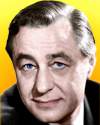
Died 31 Aug 2002 at age 81 (born 6 Dec 1920). quotes
English chemist, who was awarded a share of the 1967 Nobel Prize for Chemistry, with Englishman Ronald Norrish and German Manfred Eigen, "for their studies of extremely fast chemical reactions, effected by disturbing the equlibrium by means of very short pulses of energy." Porter showed how the flash-photolysis method - a technique for observing the intermediate stages of very fast chemical reactions - can be extended and applied to many diverse problems of physics, chemistry and biology. An example is the examination of photosynthesis. He extended these techniques into the nanosecond and picosecond regions. Porter also made contributions to other techniques, particularly that of radical trapping and matrix stabilisation.«
English chemist, who was awarded a share of the 1967 Nobel Prize for Chemistry, with Englishman Ronald Norrish and German Manfred Eigen, "for their studies of extremely fast chemical reactions, effected by disturbing the equlibrium by means of very short pulses of energy." Porter showed how the flash-photolysis method - a technique for observing the intermediate stages of very fast chemical reactions - can be extended and applied to many diverse problems of physics, chemistry and biology. An example is the examination of photosynthesis. He extended these techniques into the nanosecond and picosecond regions. Porter also made contributions to other techniques, particularly that of radical trapping and matrix stabilisation.«
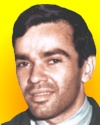
(10 Sep 1939)
Died 31 Aug 2002 at age 89 (born 27 Aug 1913).
Martin David Kamen was a Canadian-American biochemist, who co-discovered (27 Feb 1940) the synthesis of the isotope carbon-14 by bombarding a target of graphite with sub-atomic particles from the laboratory 60-inch cyclotron. He worked with Sam Ruben at the Radiological Laboratory, University of California, Berkeley. (This isotope, naturally produced by cosmic rays in the atmosphere, was subsequently found immensely useful for carbon-dating by Willard Libby.) Kamen’s career was interrupted by personal misfortunes, including being summoned to appear before the House Un-American Activities Committee (1948), but he was eventually honored with the 1995 Enrico Fermi award for lifetime scientific achievement.« more
Martin David Kamen was a Canadian-American biochemist, who co-discovered (27 Feb 1940) the synthesis of the isotope carbon-14 by bombarding a target of graphite with sub-atomic particles from the laboratory 60-inch cyclotron. He worked with Sam Ruben at the Radiological Laboratory, University of California, Berkeley. (This isotope, naturally produced by cosmic rays in the atmosphere, was subsequently found immensely useful for carbon-dating by Willard Libby.) Kamen’s career was interrupted by personal misfortunes, including being summoned to appear before the House Un-American Activities Committee (1948), but he was eventually honored with the 1995 Enrico Fermi award for lifetime scientific achievement.« more
Hot Carbon: Carbon-14 and a Revolution in Science, by John Marra. - book suggestion.
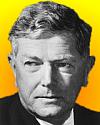
Died 31 Aug 1985 at age 85 (born 3 Sep 1899). quotes
Sir Frank Macfarlane Burnet was an Australian physician, virologist, and recipient, with Sir Peter Medawar, of the 1960 Nobel Prize for Physiology or Medicine for the discovery of acquired immunological tolerance to tissue transplants. He studied the nature of antibody formation and immune processes and developed the notion of immunological tolerance to explain why humans do not form antibodies to their own bodily constituents. He also wrote about how mistakes of the immune system might cause obscure forms of blood, liver and kidney disease. He made pioneering use of fertile hen's eggs as hosts for virus multiplication. The concepts he developed are part of the basis for current theories about viruses as cancer-causing agents.
Sir Frank Macfarlane Burnet was an Australian physician, virologist, and recipient, with Sir Peter Medawar, of the 1960 Nobel Prize for Physiology or Medicine for the discovery of acquired immunological tolerance to tissue transplants. He studied the nature of antibody formation and immune processes and developed the notion of immunological tolerance to explain why humans do not form antibodies to their own bodily constituents. He also wrote about how mistakes of the immune system might cause obscure forms of blood, liver and kidney disease. He made pioneering use of fertile hen's eggs as hosts for virus multiplication. The concepts he developed are part of the basis for current theories about viruses as cancer-causing agents.
Died 31 Aug 1949 at age 75 (born 14 Jul 1874).
French chemist.
French chemist.
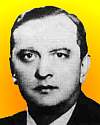
Died 31 Aug 1945 at age 53 (born 30 Mar 1892). quotes
Polish mathematician who founded modern functional analysis and helped develop the theory of topological vector spaces. In addition, he contributed to measure theory, integration, the theory of sets, and orthogonal series. In his dissertation, written in 1920, he defined axiomatically what today is called a Banach space. The idea was introduced by others at about the same time (for example Wiener introduced the notion but did not develop the theory). The name 'Banach space' was coined by Fréchet. Banach algebras were also named after him. The importance of Banach's contribution is that he developed a systematic theory of functional analysis, where before there had only been isolated results which were later seen to fit into the new theory.
Polish mathematician who founded modern functional analysis and helped develop the theory of topological vector spaces. In addition, he contributed to measure theory, integration, the theory of sets, and orthogonal series. In his dissertation, written in 1920, he defined axiomatically what today is called a Banach space. The idea was introduced by others at about the same time (for example Wiener introduced the notion but did not develop the theory). The name 'Banach space' was coined by Fréchet. Banach algebras were also named after him. The importance of Banach's contribution is that he developed a systematic theory of functional analysis, where before there had only been isolated results which were later seen to fit into the new theory.
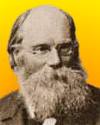
Died 31 Aug 1937 at age 88 (born 12 Apr 1849).
Swiss geologist whose studies of the Swiss Alps greatly advanced knowledge of the dynamics of mountain building and of glacial effects on topography and geology. He studied the formation of overthrusts and nappes in the Alps. He supported the idea of a contracting Earth. He also studied the mechanics of rock deformation, proposing that rocks can deform plastically under pressure and that the same pressure causes metamorphism. After a near-fatal fall in the Alps during which he had a mystical experience, Heim began the first serious study of near-death experiences. Over a period of several decades he collected observations and accounts from numerous survivors of serious accidents. Heim first presented these findings at the Swiss Alpine Club in 1892.
Swiss geologist whose studies of the Swiss Alps greatly advanced knowledge of the dynamics of mountain building and of glacial effects on topography and geology. He studied the formation of overthrusts and nappes in the Alps. He supported the idea of a contracting Earth. He also studied the mechanics of rock deformation, proposing that rocks can deform plastically under pressure and that the same pressure causes metamorphism. After a near-fatal fall in the Alps during which he had a mystical experience, Heim began the first serious study of near-death experiences. Over a period of several decades he collected observations and accounts from numerous survivors of serious accidents. Heim first presented these findings at the Swiss Alpine Club in 1892.
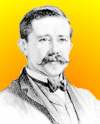
(EB)
Died 31 Aug 1927 at age 69 (born 12 Jun 1858).
British explorer, botanist, and pioneer colonial administrator. His interest in zoological specimens gave him a lucrative part-time income, illustrating books for the new sciences of biology, geography and anthropology. The combination of art, languages and a developing interest in the sciences marked Johnston as a new breed of scholar whose skills met colonialism's need for exploration, expansion and documentation.Widely travelled in Africa and speaking many African languages, he was closely involved in what has been called the scramble for Africa by 19th-century colonial powers. He published 40 books on African subjects.
British explorer, botanist, and pioneer colonial administrator. His interest in zoological specimens gave him a lucrative part-time income, illustrating books for the new sciences of biology, geography and anthropology. The combination of art, languages and a developing interest in the sciences marked Johnston as a new breed of scholar whose skills met colonialism's need for exploration, expansion and documentation.Widely travelled in Africa and speaking many African languages, he was closely involved in what has been called the scramble for Africa by 19th-century colonial powers. He published 40 books on African subjects.
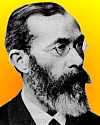
Died 31 Aug 1920 at age 88 (born 16 Aug 1832). quotes
Wilhelm Max Wundt was a German psychologist and physiologist who established the first laboratory for experimental psychology (1879). He initiated lectures in scientific psychology, in which he stressed the use of experimental methods drawn from the natural sciences, which he expanded and published as Lectures on the Mind of Humans and Animals (1863). In his important work, Principles of Physiological Psychology (1874) he maintained that psychology should investigate the immediate experiences of consciousness, including sensations, feelings, volitions, apperception, and ideas. His methods are still used in modern psychophysical work, where reactions to external stimuli are measured in some way, such as reaction time, reactions and comparison with graded colors or sounds.«
Wilhelm Max Wundt was a German psychologist and physiologist who established the first laboratory for experimental psychology (1879). He initiated lectures in scientific psychology, in which he stressed the use of experimental methods drawn from the natural sciences, which he expanded and published as Lectures on the Mind of Humans and Animals (1863). In his important work, Principles of Physiological Psychology (1874) he maintained that psychology should investigate the immediate experiences of consciousness, including sensations, feelings, volitions, apperception, and ideas. His methods are still used in modern psychophysical work, where reactions to external stimuli are measured in some way, such as reaction time, reactions and comparison with graded colors or sounds.«
Wilhelm Wundt in History: The Making of a Scientific Psychology, by David K. Robinson. - book suggestion.
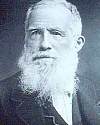
Died 31 Aug 1900 at age 85 (born 28 Dec 1814).
(1st Baronet) English agronomist who initiated the artificial fertiliser industry and founded the world's first agricultural research station. While a young man, he studied how manures improved growth of potted plants and crops. In 1842, having patented a method to make superphosphate by treating phosphate rock with sulphuric acid, he started the first artificial fertiliser factory. In 1843, Lawes opened the Rothamsted Experimental Station where he began a 57-yr collaboration with chemist Joseph Henry Gilbert. They developed modern scientific agriculture, researching animal nutrition with different fodders, and the effect on crop yields of inorganic and organic fertilisers. Some of their long-term field experiments continue to this day.«
(1st Baronet) English agronomist who initiated the artificial fertiliser industry and founded the world's first agricultural research station. While a young man, he studied how manures improved growth of potted plants and crops. In 1842, having patented a method to make superphosphate by treating phosphate rock with sulphuric acid, he started the first artificial fertiliser factory. In 1843, Lawes opened the Rothamsted Experimental Station where he began a 57-yr collaboration with chemist Joseph Henry Gilbert. They developed modern scientific agriculture, researching animal nutrition with different fodders, and the effect on crop yields of inorganic and organic fertilisers. Some of their long-term field experiments continue to this day.«
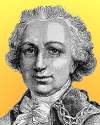
Died 31 Aug 1811 at age 81 (born 11 Nov 1729).
French navigator and scientist, born in Paris. A friend of the philosophe Jean le Rond d'Alembert, Bougainville was elected to the British Royal Society in 1754 in recognition of a work on calculus that he wrote at age 25. An accomplished scholar, he was also a man of action who fought in the Seven Years War and explored the Pacific Ocean. Accompanied by naturalists and astronomers, he made a voyage around the world (1767–69). He visited many of the islands of the South Pacific and compiling a scientific record of his findings. The largest of the Solomon Islands is named after him, as is the colourful tropical climbing plant bougainvillaea. At end of his navy career, he was elected to the Academy of Sciences and to the Board of Longitude.
French navigator and scientist, born in Paris. A friend of the philosophe Jean le Rond d'Alembert, Bougainville was elected to the British Royal Society in 1754 in recognition of a work on calculus that he wrote at age 25. An accomplished scholar, he was also a man of action who fought in the Seven Years War and explored the Pacific Ocean. Accompanied by naturalists and astronomers, he made a voyage around the world (1767–69). He visited many of the islands of the South Pacific and compiling a scientific record of his findings. The largest of the Solomon Islands is named after him, as is the colourful tropical climbing plant bougainvillaea. At end of his navy career, he was elected to the Academy of Sciences and to the Board of Longitude.
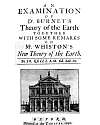
Died 31 Aug 1721 at age 49 (born 1 Dec 1671).
Scottish mathematician and natural philosopher, who was a major proponent of Newton's theories. He began his university education at Edinburgh under David Gregory, whom he followed to Oxford, where Keill lectured on Newton's work, and eventually became professor of astronomy. In his book, An Examination of Dr. Burnett's Theory of the Earth (1698), Keill applied Newtonian principles challenging Burnett's unsupportable speculations on Earth's formation. In 1701, Keill published Introductio ad Veram Physicam, which was the first series of experimental lectures and provided a clear and influential introduction to Isaac Newton's Principia. He supported Newton against priority claims by Leibnitz for the invention of calculus. (James Keill was his younger brother.)«
Scottish mathematician and natural philosopher, who was a major proponent of Newton's theories. He began his university education at Edinburgh under David Gregory, whom he followed to Oxford, where Keill lectured on Newton's work, and eventually became professor of astronomy. In his book, An Examination of Dr. Burnett's Theory of the Earth (1698), Keill applied Newtonian principles challenging Burnett's unsupportable speculations on Earth's formation. In 1701, Keill published Introductio ad Veram Physicam, which was the first series of experimental lectures and provided a clear and influential introduction to Isaac Newton's Principia. He supported Newton against priority claims by Leibnitz for the invention of calculus. (James Keill was his younger brother.)«

Memory's Voice: Deciphering the Mind-Brain Code, by Daniel L. Alkon. - book suggestion.
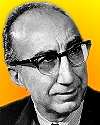
In 1968, Dr. Michael E. DeBakey of Houston led the first simultaneous multi-organ transplant from one donor to four recipients. Two kidneys, one lobe of a lung and the heart were removed from a 20-yr-old women who died from a gunshot. The organs were transplanted into four men at Methodist Hospital, Houston, Texas. . The surgery, which began within eight hours of the woman's death, was performed by five teams totalling more than 60 physicians, nurses and support persons. The heart, lobe of a lung, and two kidneys were transplanted into men aged 50, 39, 41 and 22 respectively. DeBakey was a pioneer in cardiovascular surgery, who had invented or perfected many medical devices, techniques and procedures.«*
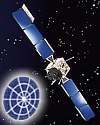
In 1962, President Kennedy signed the Satellite Act. Congress thus stated that it was to be the policy of the U.S. "to establish, in conjunction and in cooperation with other countries, as expeditiously as practicable a commercial communications satellite system, as part of an improved global communications network, which will be responsive to public needs and national objectives, which will serve the communication needs of the United States and other countries, and which will contribute to world peace and understanding." The service was to sensitive to meeting the needs of economically less developed countries. Control of international satellite communications was given to a new private corporation called the Communications Satellite Corporation or Comsat.«[Image: Communications satellite; inset bottom left: Comsat logo.]
Uncle Sam's private profitseeking corporations: Comsat, Fannie Mae, Amtrak, and Conrail, by Lloyd D Musolf. - book suggestion.
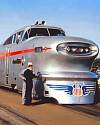
In 1955, the first solar-powered car was publicly demonstrated. It was a 15-inch Sunmobile built by William G. Cobb of the General Motors Corporation. Light energy falling on 12 selenium photoelectric cells created electric current to power a tiny electric motor that turned a driveshaft connected to the car's rear axle by a pulley. It was one of 253 free exhibits of the General Motors Powerama, Chicago, Ill. seen by over 2,500,000 visitors during this 28-day, $7,000,000 event spread over 1,000,000 sq ft on the shore of Lake Michigan. It showcased the company's modern diesel power, including an oil well, cotton gins, cranes, earth-movers, trucks, tractors, military equipment, a submarine, a shrimp boat, Aerotrain, an aluminium foundry and other machinery.«[Image: the lightweight Aerotrain was displayed at Powerama.]
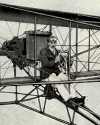
In 1910, the first U.S. airplane flight over water was made by Glenn Hammond Curtiss in his biplane over Lake Erie from Euclid Beach Park, Cleveland, Ohio, to Cedar Point, Sandusky, Ohio. At an altitude between 400 and 500 feet, the 70 mile trip took 78 minutes nonstop. Curtiss reported in the New York Times that he found that the "lake wind was not so steady as ocean trade winds. It was puffy the last twenty miles, and the riding then a little rough. Otherwise the flight was smooth." He delayed his return because of rain. The next day, flying back to Cleveland, he beat both the Lake Shore Limited train and homing pigeons, although it took longer than the first flight because he had to face strong winds. His return to Euclid Beach was greated by 20,000 people.«[Image: detail from cover of sheet music for the march "King Of The Air" dedicated to Glenn Curtis showing the aviator seated in front of the engine of his biplane with rear-mounted propeller.]
Hata(R)Thm.jpg)
In 1909, Nobelist Paul Ehrlich began the first chemotherapy (a term he coined). Some time before, he had given his assistant, Sahachiro Hata, two organic arsenic compounds to test as a treatment for syphilis caused by Treponema pallidum. That micro-organism could not be grown on a culture medium, but Hata became the first to discover how to infect rabbits to produce syphilis. After many careful experiments, Hata reported success with "Preparation 606" (the 606th chemical devised by Ehrlich's team). On 31 Aug 1909, Ehrlich watched Hata inject 606 into a rabbit with syphilitic ulcers. The next day, no treponeme could be found, and the ulcers healed within a month. Thus syphilis was the first disease caused by a microorganism to be cured with a specific drug.«[Image left: Ehrlich; right: Hata.]
Paul Ehrlich: Scientist for Life, by Ernest Baumler. - book suggestion.
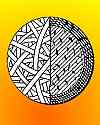
(USPTO)
In 1909, Benjamin Shibe recieved a U.S. patent on the cork center baseball (No. 932,911). In 1909, when a baseball stadium, Shibe Park in Philadelphia was built for the Philadelphia Athletics, it was named after him as their principal owner. Later, the stadium became Connie Mack Stadium, the home of the Philadelphia Phillies until 1971. A partner in the A.J. Reach sporting goods company, Shibe invented the machinery that made possible the manufacture of standard baseballs.[Image: patent diagram showing cross-section of core of base-ball made of cork wound with soft india-rubber strands.] more
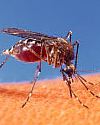
In 1900, Private William Dean became the first volunteer with clear results that exposed himself to yellow fellow as part of the research carried out by Walter Reed at Quemados, Cuba. Dean allowed Mosquito No.12 to feed on his arm. Previous volunteers exposed to mosquitoes that had fed on infected persons had not developed yellow fever. James Carroll, a member of the Yellow Fever Commission, received the bite of an infected mosquito (with a longer incubation period), and on 29 Aug 1900 became severely ill with yellow fever. The results were not clear in that Carroll may have acquired the disease from exposure of some other kind. When William Dean, bitten by the same mosquito as Carroll, developed the disease, the mosquito theory was vaildated. Both recovered.«
In 1900, Coca-Cola was first sold in Britain in the basement restaurant of Spence's department store, a silk merchant and general goods store at 76-79, St Paul's Churchyard, London EC4. It later went on regular sale through soda fountain outlets, which included Selfridges and The London Coliseum. Charles Candler, son of Asa Candler, the owner of The Coca-Cola Company, had earlier brought a jug of syrup with him in a visit to London. Coca-Cola was invented on 8 May 1886 by Dr John Styth Pemberton in Jacob's Pharmacy in Atlanta, Georgia.
For God, Country, and Coca-Cola: The Definitive History of the Great American Soft Drink and the Company That Makes It, by Mark Pendergrast. - book suggestion.
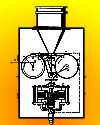
(USPTO)
In 1897, Thomas A. Edison received a U.S. patent for his kinetoscope camera, a device for producing moving pictures (No.589,168). In the patent, he described its purpose was “to produce pictures representing objects in motion throughout an extended period of time which may be utilized to exhibit the scene including such moving objects in a perfect and natural manner by means of a suitable exhibiting apparatus” by photography to expose a “sensitized tape-like film” with perforated edges. Edison determined that a speed of 30 pictures per second with the persistence of vision produced the effect of viewing the subject motion. While capturing each image, this rate was sufficient to move the film, yet allow a period of rest while each picture was exposed.«
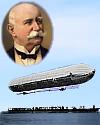
In 1895, Count Ferdinand von Zeppelin patented in Germany his invention of the rigid airship, known as the Zeppelin. The overall cylindrical shape with rounded ends was covered with a cotton shell, framed with aluminium struts, wire-braced and contained a number of independent hydrogen balloons used for lift. Two or more seperate engines were suspended below for propulsion. The patent title, “Lenkbarer Luftfahrzug” (steerable air-cruising train), referred to a feature whereby additional cylindrical mid-segments could be connected together for a longer airship with greater carrying capacity, though none were ever made in this form. A similar U.S. patent was issued on 14 Mar 1899 for his “Navigable Balloon.” He made his first flight with the LZ-1 on 2 Jul 1900 over Lake Constance, Germany.«5 May 2013: added Thm from entry on first flight
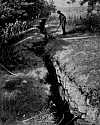
In 1886, the first U.S. earthquake on record with significant human consequence - the loss of some 100 lives - hit Charleston, S.C. and its massive effect spread through many eastern States. The epicenter was 15 miles northwest of Charleston, where 41 people died, 90 percent of the city's 6,956 brick buildings were damaged, and nearly all of its 14,000 chimneys were broken off at the roof. However, geologically the most severe earthquakes in U.S. history had occurred earlier in the century (16 Dec 1811). The epicenter then was in a sparsely populated region and caused no known casualties, so the human consequences were relatively not significant, although the violent movement of the ground changed the course of the Mississippi River and created many new lakes.«
more
City of Heroes: The Great Charleston Earthquake of 1886, by Richard N. Côté. - book suggestion.
In 1880, Thomas A. Edison was granted a U.S. patent for his invention of an “Electro-Chemical Receiving-Telephone” (No. 231,704).
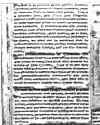
In 1861, full pages of the New York Tribune were printed for the first time in the U.S. using curved stereotype plates. Such plates were first cast by Charles Craske in 1854 in New York City for a Hoe rotary press. Stereotyping also enabled the publisher to make duplicate plates for two presses which could half total production time to run an edition with no extra costs in typesetting. Flat stereotyping had been used as early as 1725 when William Ged took metal castings from plaster moulds made from a frame of type, and in this way introduced a method for book publishers to reduce wear on their type, and let the type itself be reused for subsequent pages. Papier maché replaced plaster in the 1830s. Craske extended the idea to making curved plates for rotary use.«[Image: section of a flat papier maché flong stereo mould with the impression obtained in the moulding press. Large raised areas are supported by packing in hollows of the reverse side.] more
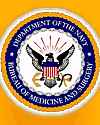
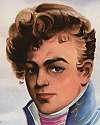
A History of Medicine in the Early U.S. Navy, by Harold D. Langley. - book suggestion.
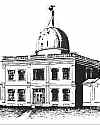
In 1842, the U.S. Naval Observatory was authorised by an act of Congress, one of the oldest scientific agencies in the U.S. James Melville Gilliss (1811-1865) is considered its founder, who in 1842 he secured the Congressional appropriation for the Depot of Charts and Instruments (est. 1830) to become the Naval Observatory. Its primary task was to care for the Navy's charts, navigational instruments and chronometers, which were calibrated by timing the transit of stars across the meridian. Initially located at Foggy Bottom, the observatory moved in 1893 to its present facility in Washington, DC. Gillis visited Europe to procure instruments, and the books that formed the core of the Naval Observatory Library. Matthew Fontaine Maury was the first director, followed by Gillis (1861-65).«[Image: domed portion of Foggy Bottom building, showing mast on which a ball dropped at noon as a visual signalofthe time. The structure had smaller wings on each side.]
Sky and Ocean Joined: The U.S. Naval Observatory, 1830-2000, by Steven Dick. - book suggestion.
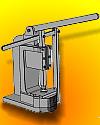
(USPTO)
In 1842, the first U.S. patent for a machine to trim the heads of nuts and bolts was issued to Micah Rugg (No. 2,766). In 1838, Rugg had a blacksmith shop where with Martin Barnes, he began making bolts and nuts for the market. Together, in 1840, they established the first U.S. nuts and bolts factory in Marion, Connecticut. It was a specially-designed one-story, 30 ft by 20 ft, wooden building where with six employees, their capacity production was 500 bolts a day. (Prior to 1838, when they started making bolts commercially, these articles were hammered out and hand-finished by blacksmiths. An earlier but impractical machine had been patented by David Wilkinson of Rhode Island on 14 Dec 1798.)
more
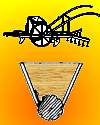
(USPTO)
In 1836, a second U.S. patent was granted to one of the earliest African-American inventors, Henry Blair, a free man of Glenross, Maryland, for a cotton seed planter (No. 15). His first patent was for a corn planter (14 Oct 1834, No. X8447). Blair was born in Maryland about 1807 and lived until 1860. He was a successful farmer whose inventions met a need to increase efficiency in farming. His patents were signed with a simple "X" because he had not learned to read or write. Henry Blair was the second African-American to hold a patent. For some time he had been regarded as the first, until it became better known that the first African-American on record to be granted a patent was Thomas Jennings for a "dry-scouring" cleaning process (3 Mar 1821 No. X3306).«[Image: drawing from earlier corn planter upon which the cotton planter is a modification. Top: side view of machine; bottom: detail of section of seed hopper showing cylinder with holes in the periphery that turns with the wheels to drop grains of corn. more
The Inventive Spirit of African Americans: Patented Ingenuity, by Patricia Carter Sluby. - book suggestion.
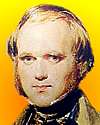
In 1831, Charles Darwin was visiting Maer Hall, home of his uncle Josiah Wedgwood II, whom he told of his father's (Robert Darwin) opposition to him joining a two-year voyage on H.M.S. Beagle. Charles was enthusiastic about the opportunity, but his father objected to it as a waste of time, delaying his expected career in the clergy, and would not give his permission. His father said, however, he could be swayed to change his opinion, he said, if Charles found a man with common sense who would regard the proposed trip as being worthwhile. Charles found that man in his uncle Josiah, who wrote a letter to Robert, answering all of the objections in his favour. Josiah was Robert's brother-in-law, and as a family member was successful in influencing him to change his mind.«
From So Simple a Beginning: Darwin's Four Great Books, by Charles Darwin, Edward O. Wilson. - book suggestion.
In 1625, the first patent for antifouling paint was issued in Britain to William Beale (No. 32/1625). He used a mixture of cement, copper compound, and powdered iron that was intended to impair marine growth of the boreworm on a ship's hull. The first U.S. patent for a paint against fouling by shells and weeds was issued on 3 Nov 1863 to James G. Tarr and Augustus H.Wonson of Gloucester, Mass. (3 Nov 1863 No. 40515) which used copper oxide powdered from ore in Stockholm tar, and naptha or benzine. The first patent under Japan's Patent Monopoly Act was for an antifouling paint, was issued 14 Aug 1885 to Zuisho Hotta for a formula combining lacquer, powdered iron, red lead, persimmon tannin, and other ingredients.«*




